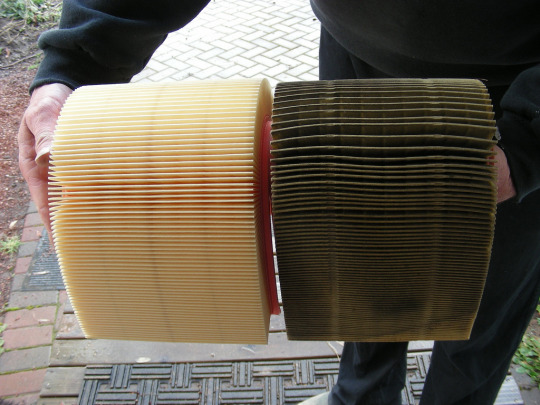Air filter has become one of the most important components found in cars, since these vehicles hit the streets about 100 years ago. During the time, these filters were only a simple screen that prevents larger contaminants from entering the engine block. Eventually, more comprehensive filter cans are placed on the carburettor. Pleated, drop-in filter is already a worldwide standard. According to tests, it is discovered that up to 90 percent of contaminants found in engine oil come from dirty air. Contaminants could also be from fine metallic particles due to engine wear and tear; or from combustion by-products. However, good filters are enough to keep our engine relatively clean, despite the presence of internal contaminants.
Contaminants inside the engine cylinder could reach up to 20 micron and they will result in engine wear. In fact, a good filter should be able to prevent particles smaller than 5 micron from entering the engine block. These particles could make their way into tight spaces, including bearing and various other components. Although particles no bigger than 5 micron only cause wear at smaller degree, significant presence of these contaminants could cause abrasion effects inside the cylinder. It means that we should prevent the engine from ingesting fine dust that can wreck our engine over time. Without an air filter, silica-based dust found on the road could be ingested into the intake plenum. Just a tablespoon of this abrasive dust, the engine may start to lose some amount of performance permanently. After weeks of use, the exhaust and intake valves could be heavily damaged. If the problem continues to occur, the engine will stall and lock up. This is something that we need to avoid.
It is clear that engine filter is an essential part of our engine and without a good filter, we could cause gradual damage to the engine. The most common filter for our engine is generally treated paper that’s backed up with synthetic material and glass fiber. Depending on the filter model, there’s a varying level of particle filtering efficiency and the amount of airflow. Oiled or open wetted gauze filter is also a common media. This filter can usually be re-oiled and rewashed using special washing material. After being cleaned properly, the filter can then be re-used. A good quality filter should be usable for a longer period of time, often for the entire life of the car. However, we should know that oiled gauze filter often has reduced particle efficiency. It is often less efficient than the usual pleated paper air filters. In some cases, they are not able to catch, small damaging particles.
Even if a filter is highly efficient, it wouldn’t provide good result, if it offers poor airflow. Some manufacturers may focus too much on enhancing the particle filtering efficiency, without considering the proper airflow. The problem could get worse when the filter has been loaded with contaminants, restricting airflow to the engine. To determine the best air filter for our car, we need to ask the car dealer about the recommended model.
























